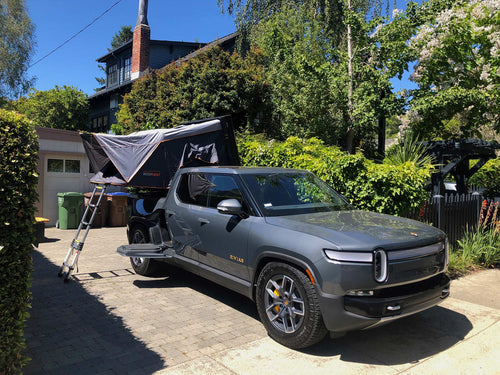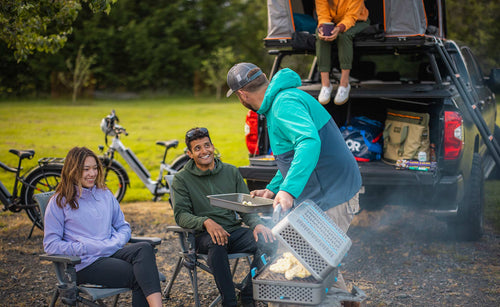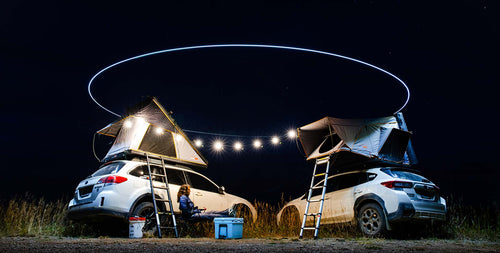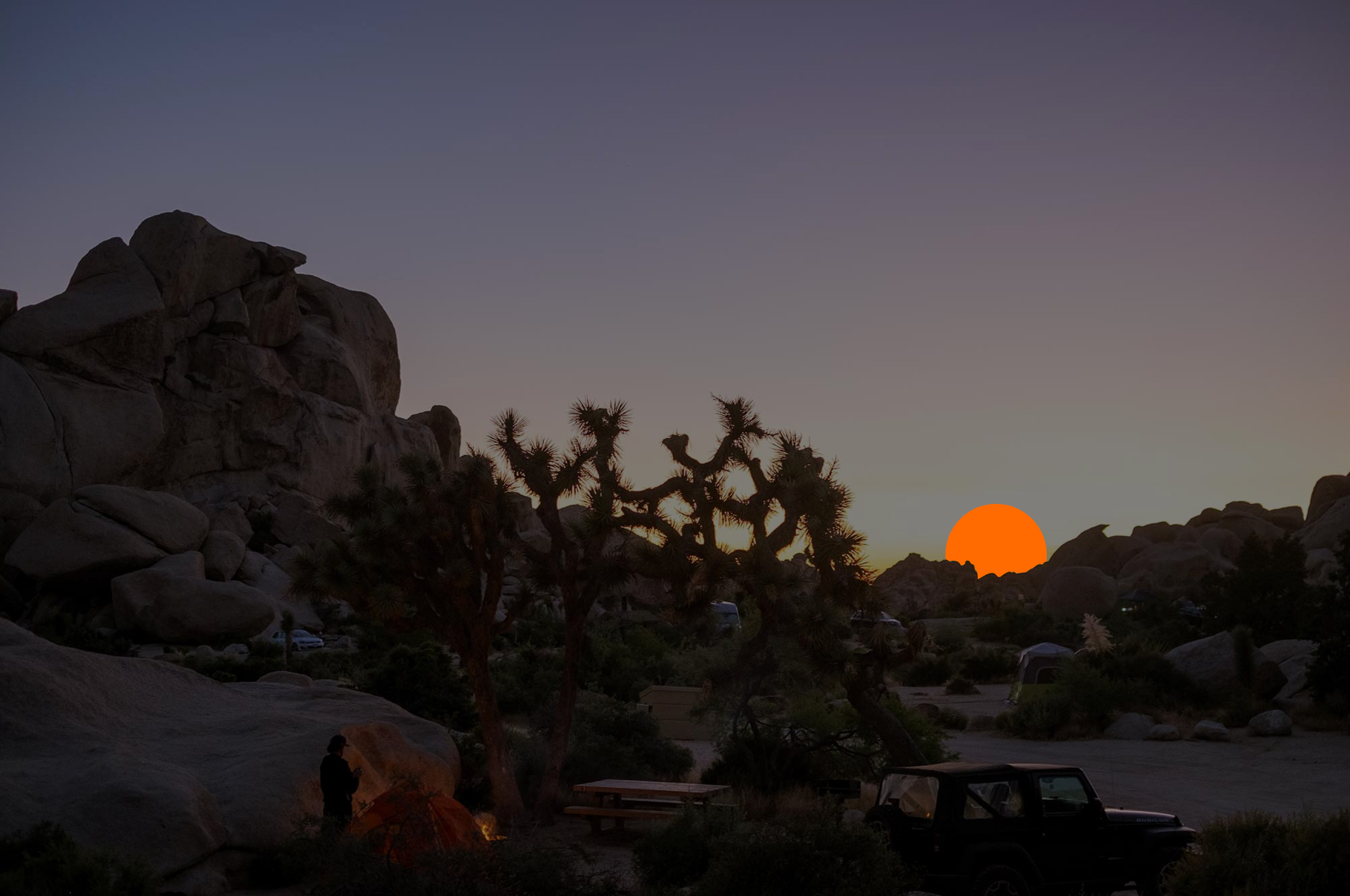Fall is definitely here with the smell of Pumpkin Spice Everything floating in the breeze. Leafpeepers flock to beautiful places for changing colors and bugling elk. Fall is also the perfect season to camp! What’s better than swapping stories by a crackling fire with your buddies? In some places, Fall seems like it was truncated this year by plummeting temperatures and early snow. Many of us probably wish Fall would stick around longer, but Winter is coming. Not technically until December 21st, Jon Snow…but that shouldn't keep you from camping in a Roofnest! I have sought a few chillier places to test how well my Eagle holds up in the cold, and here's what I found.
My first stop led me to southern Idaho in late September - specifically to City of Rocks National Reserve. I drove up steep mountain passes through National Forest as far as I could safely venture without sliding off the narrow road into a ravine caked with snow and ice. As the sun set and wind increased over my exposed campsite at 8,000 feet, the ambient temperature dropped to the low 20s. I quickly set up camp - a huge benefit of the Roofnest design - and crawled into my sleeping bag. After I ensured both door flaps and windows were securely zipped, my Eagle's thick wall material kept the howling wind and spitting snow at bay!
The following morning, I wanted to photograph sunrise over the dramatic rocky landscape below the ridge where I set up my Eagle. The vantage point I chose was a bumpy twenty minute drive away. With sunrise at about 7:30am, I wanted to be on the road no later than 7:00am to give me time to set up my gear and composition to capture the dawn light. Breaking camp in a Roofnest takes me literally two minutes by myself and about half that time with someone else helping. If you're like me and savor every extra minute of sleep you can muster, the simplicity of a Roofnest is perfect. Try packing up camp that quickly in a traditional tent...especially in the wind and snow! [av_button label='Order Your Roofnest Today!' link='page,2689' link_target='_blank' size='x-large' position='center' label_display='' icon_select='no' icon='ue800' font='entypo-fontello' color='theme-color' custom_bg='#444444' custom_font='#ffffff' av_uid='av-8g94j' custom_class='' admin_preview_bg=''] Fast forward a couple weeks to early October. My travels took me to a campsite off of I-80 in southeastern Wyoming. This particular stretch of interstate was closed a couple days prior due to winter weather conditions so I knew camping here had some serious cold-testing potential! I was welcomed at my site near Medicine Bow National Forest by three inches of snow and drifts two feet deep. Wind blew the snow around all night, and the temperature dropped to the low teens. Cold weather camping isn't just for cabin renters or hardcore alpinists...with a decent sleeping bag and warm layers, I am confident my Roofnest will continue to keep me dry in cold conditions while providing adequate shelter from harsh wind. While I haven't yet had the opportunity to test my 'nest in substantial snowfall, I have full intentions to do just that here in Colorado! In closing, here are a few tips I've learned for cold weather camping in a Roofnest: 1. Get a good sleeping bag - Not all sleeping bags are created equally, but you don't have to spend a fortune for a decent bag. I use a sack rated to 12F. This rating doesn't mean I'll be warm wearing nothing but my birthday suit in the sleeping bag at that ambient temperature, but it should keep me warm with light layers on. 2. Wear warm layers - Roofnest wall material works perfectly for blocking wind. With a puffy and long Johns on inside your sleeping bag, you should be good to go for cold weather camping! Remember, it's much easier to shed layers than tough it out with inadequate clothing. Or skip the clothes and bring a cuddle buddy in a double sleeping bag...whatever works for you! 3. Secure the pull down straps - Those handy straps that make storing your Roofnest a breeze will whip against the hard top and sides of your tent in a stiff wind if not tied down. There are lots of ways to accomplish this - I tuck the loose webbing inside the buckles or tie them off to my crossbars. Left free, those straps might keep you awake all night (yep, I learned this one the hard way). 4. Zip everything tight - Wind is not your friend when trying to stay warm in winter conditions. Double check that your window and door zippers are completely closed to eliminate any air flow. Condensation may form and freeze on the outside shell of your Roofnest - as it does on a traditional camping tent in freezing conditions - but I have yet to feel that condensation inside my Eagle! 5. Bring an extra blanket - One of the many cool aspects about a Roofnest is your ability to store lots of things - sleeping bags, camp chairs, pillows, ladder, etc. upstairs - so why not throw in an extra blanket? I actually have two blankets in my Eagle. One for a little extra insulation below me and the second for my feet if it's really chilly.



